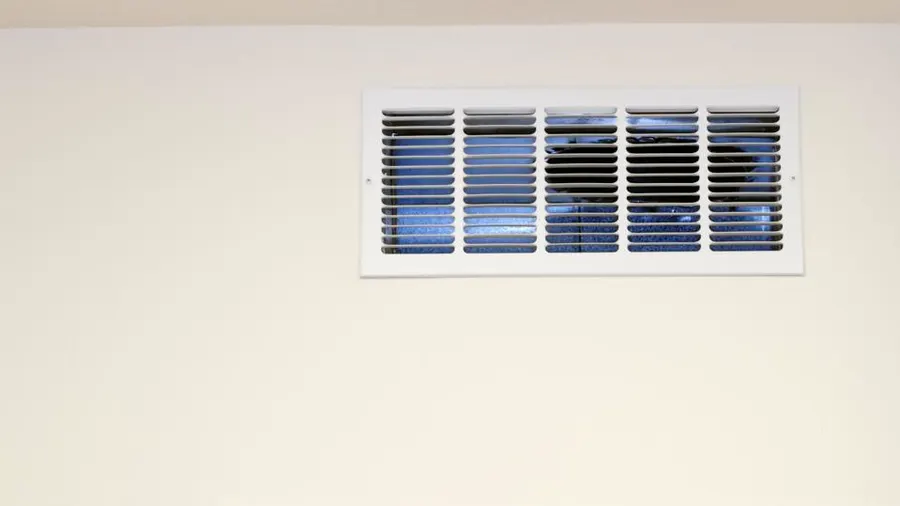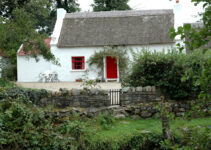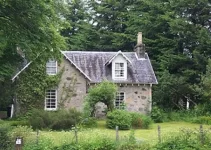If you’re not a builder or an architectural historian you may have wondered why old houses have vents in the walls. The answer is relatively straightforward: vents in old houses, especially in the UK, serve as a building’s ventilation and moisture control.
Without the sophistication of modern methods for air control, old houses utilised vents in the form of brick, clay, and later, metal vents. And in many cases, the practical necessity of vents became part of the aesthetic and historical character of the building.
Now, they can be seen as architectural features that reflect the construction practices and design preferences of the time.
Let’s look into the practicalities of wall vents in old houses and delve a little into their fascinating history.
What is the Purpose of a Wall Vent?
Let’s look first at the purpose of wall vents in old houses. Wall vents in old houses were included in houses design to allow air to flow in and out of a building.
And, however basic or aesthetically designed these vents are, they serve two main functional purposes which we’ll outline here:
Moisture Control
Older houses were sometimes constructed with material and in locations which showed little regard for the damage damp can do.
Without proper ventilation, excess moisture can lead to dampness, mould growth, and structural damage. And in cold climates like the UK, temperature differences between the warm interior and the cold exterior can lead to condensation forming on the inside of walls.
To mitigate these issues, vents were a rudimentary way of controlling moisture levels within the building reducing problems with damp by allowing moisture to escape from the building’s interior.

Natural Ventilation
Before the widespread use of modern heating and air regulation systems, natural ventilation was crucial for maintaining indoor air quality and temperature regulation.
Good air quality reduces the risk of respiratory problems, allergies, and other health issues caused by poor indoor air.
Many older houses in the UK were heated using coal fires or other forms of solid fuel. These fires produced smoke and fumes that needed a way to escape the building. Vents in the walls provided an outlet for these emissions.
Vents also allowed for the exchange of air which helps regulate indoor temperatures. During hot weather, vents allow hot air to escape, cooling the interior.
In colder weather, they assist in preventing condensation and maintaining a comfortable indoor environment.
Do You Need Wall Vents in Old Houses?
The need for wall vents in old houses depends on several factors, including the specific characteristics of the house.
Before modifying or removing vents from an old house you should consider its location, the materials used in the house’s construction, and any modern modifications that have been made that deal with ventilation.
But while wall vents are common in older houses, they might not always be strictly necessary in every situation. Here are some considerations:
Has The Old House Been Modernised?
If an old house has undergone significant modernisation, such as the addition of central heating, double glazing, improved insulation and effective damp-proofing, the need for traditional wall vents may be reduced. Modern construction techniques and materials can better manage moisture and ventilation than vents.
If no modernisation has occurred or is due to be completed, the vents should be retained – there may be no other method of ventilation.
Does The Old House Have A Historic Preservation Order?
If the house has listed building status, or if the goal is to preserve the historical authenticity of the house, retaining or replicating the original wall vents might be a priority, even if they’re not strictly necessary from a functional standpoint.
It’s essential to strike a balance between preserving historical features and ensuring the comfort, safety, and longevity of the building.
And, if you’re uncertain about the necessity of wall vents in a specific old house, consulting historic preservation experts is advisable.
They can assess the specific conditions of the house and provide guidance on whether wall vents are necessary or if alternative solutions can be implemented.
Do Wall Vents Stop Damp?
Wall vents can help prevent dampness to some extent by facilitating air circulation and moisture control within a building, but they don’t stop it.
Dampness occurs when excess moisture accumulates within the indoor environment even from basic human functions like breathing and sweating, let alone the added modern effects of indoor water use such as washing up and showering.
This can lead to the growth of mould and mildew, or lead to potential damage to building materials. Wall vents play a role in reducing dampness.
While wall vents can be effective in addressing dampness, their effectiveness can be influenced by various factors, such as the positioning of wall vents which is crucial for effective moisture control. Vents should be strategically placed to encourage cross-ventilation and promote airflow throughout the building. The climate in which the building is located will also impact how effective wall vents are at preventing dampness.
Wall vents can be effective in preventing dampness, so it’s important to consider them as part of a comprehensive strategy that includes proper building maintenance, insulation and humidity control to ensure the best results in maintaining a dry and comfortable indoor environment.
What Happens If You Cover a Wall Vent?
Covering a wall vent can disrupt the delicate balance of indoor air quality, temperature regulation, and moisture control within a building. It’s essential to maintain open and unobstructed vents to ensure proper ventilation and prevent potential issues related to dampness, mould, health, and structural integrity.
Here’s what can happen if you cover a wall vent:
- Reduced Air Circulation
- Poor Ventilation
- Moisture Accumulation
- Temperature Imbalance
- Mould and Mildew Growth
- Health Concerns
- Energy Inefficiency
- Odour Accumulation
More worryingly, in buildings with fuel-burning appliances, covering vents can interfere with proper combustion and exhaust, potentially leading to safety hazards from gas buildup or carbon monoxide exposure.
Not only this but excess moisture caused by poor ventilation can lead to structural damage over time, affecting building materials and potentially compromising the integrity of the structure.
So, if you’re considering covering a wall vent for aesthetic reasons or other factors, consult with building professionals to explore alternative solutions that won’t compromise the functionality and health of the indoor environment.
Victorian House Wall Vents
In Victorian houses, wall vents were often incorporated as part of the building’s design and construction. These vents served various purposes, taking into account the architectural and technological practices of the time.
Many Victorian houses were built with solid brick walls and minimal insulation, which made them susceptible to damp. Wall vents were used to allow moisture-laden air to escape.
Victorian houses often had high ceilings and large rooms, which could result in poor air circulation. Wall vents were strategically placed to allow air to flow between rooms and encourage cross-ventilation. This helped move stagnant air and improve indoor air quality.
As well as this, Victorian houses commonly had fireplaces and coal-burning stoves for heating. Wall vents provided an outlet for smoke, fumes and excess heat generated by these heating sources.
The difference between vents of the pre-Victorian era and those used during this time is decoration. Victorian architecture is known for its attention to detail and decorative elements. Wall vents were often designed to be aesthetically pleasing, incorporating decorative grilles, intricate patterns and ornate features that added to the overall visual appeal of the house.
Conclusion
Old houses feature vents in their walls for crucial reasons. These architectural relics, often hidden in plain sight, are more than just nostalgic decorations – they serve vital purposes that reflect the ingenuity of a bygone era.
Today, as technology has evolved, these time-honoured vents might have taken a back seat, but their legacy endures. They are a symbol of an era when architectural solutions were basic but effective. And without a doubt, vents in our old houses add a touch of the past to infuse charm, functionality and character into our homes.



